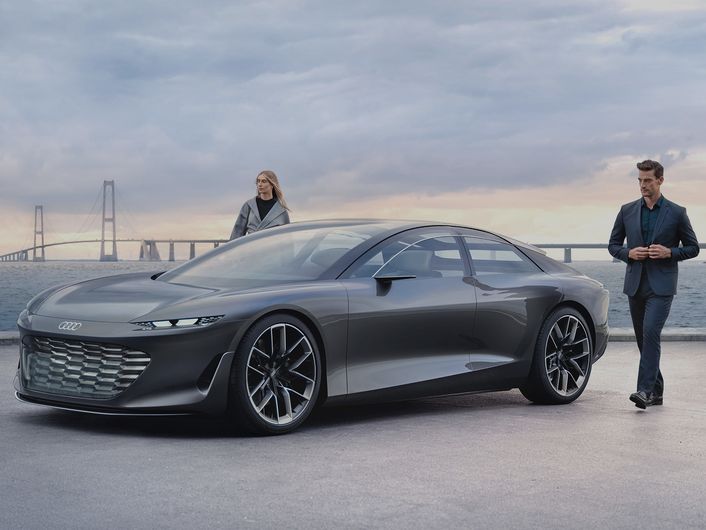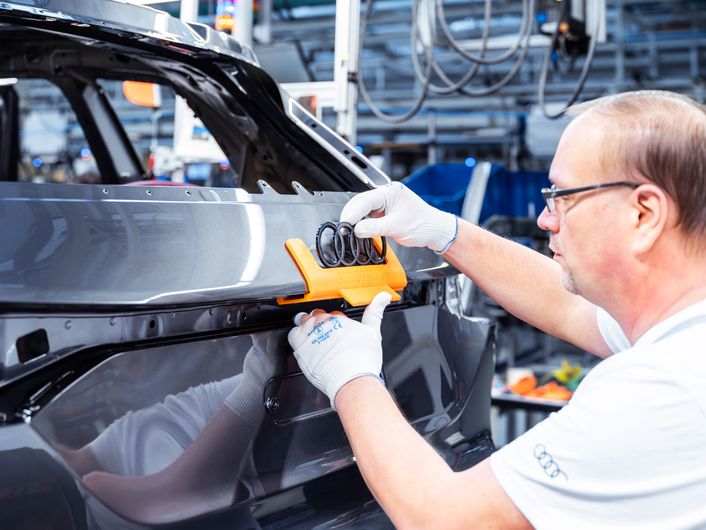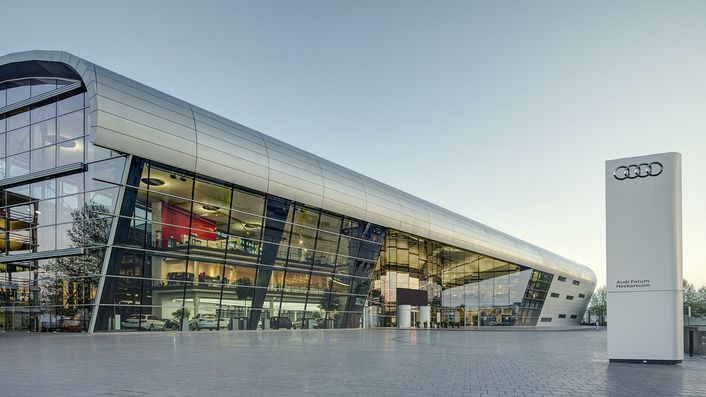The zip slider that binds the culture of ideas and series production together
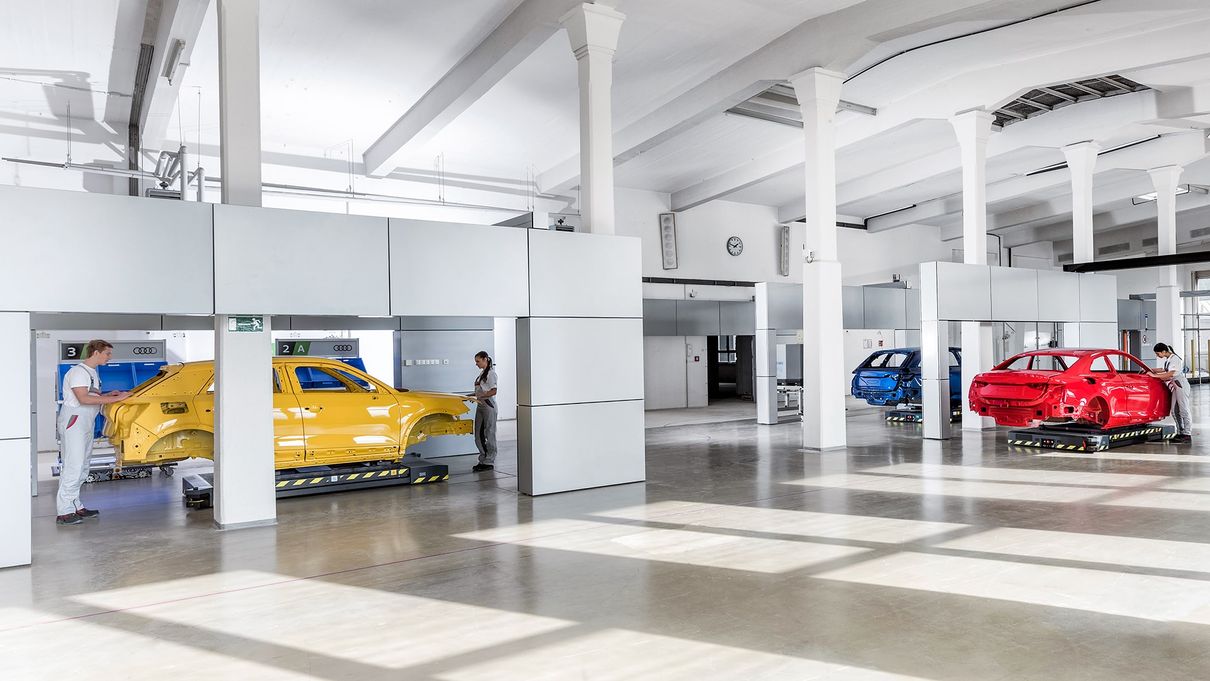
Mr. Löser, it’s something of a tradition when discussing (technical) innovations and business disruption to mention sailing ships, vinyl records and photographic film. What do these products have in common and what’s their connection with Audi? Finally and most importantly, how does the Audi Production Lab fit in?
All of the products mentioned have been replaced by new technologies. These are examples of once-popular products whose reliable functionality long made it difficult to imagine a world without them. Despite that, new technologies that improved efficiency and quality or reduced costs made them redundant. Often, the companies that manufactured the outmoded products disappeared along with them. Their confidence in the product and focus on successful processes and structures blinded them to the arrival of disruptive new technologies, which gradually edged their products out of the market. To ensure that Audi avoids the same fate, we have a number of units devoted to thinking outside the box as well as pursuing innovations and future developments. Some spotlight product options, while others focus on corporate structures. In turn, the Audi Production Lab—or P Lab for short—investigates ways to optimize our production processes.
Why does this require a dedicated lab? Can’t new ideas simply be put to the test while series production is underway?
No, that would be disastrous. Everything in our vehicle production system has to be compatible with large-scale series production. A three-shift system ensures smooth operation—something we go to great lengths to maintain. In large-scale production, processes run like clockwork, achieving fault-free performance of close to 100 percent. Anything less is unacceptable. This culture of building sound structures is the cornerstone of series production. In contrast, the P Lab embraces a culture of ideas. Here, it’s not unusual for 999 attempts to fail and only on the thousandth do we get results. For us, that counts as a success because we have proven that something can work and that it’s not impossible. So it’s pretty obvious that our two definitions of success are incompatible. At P Lab, we act as a zip slider, binding the separate cultures of structures and of ideas together. Once an idea has worked under laboratory conditions, we develop it to the point where it can ultimately perform consistently in 24/7 operations.
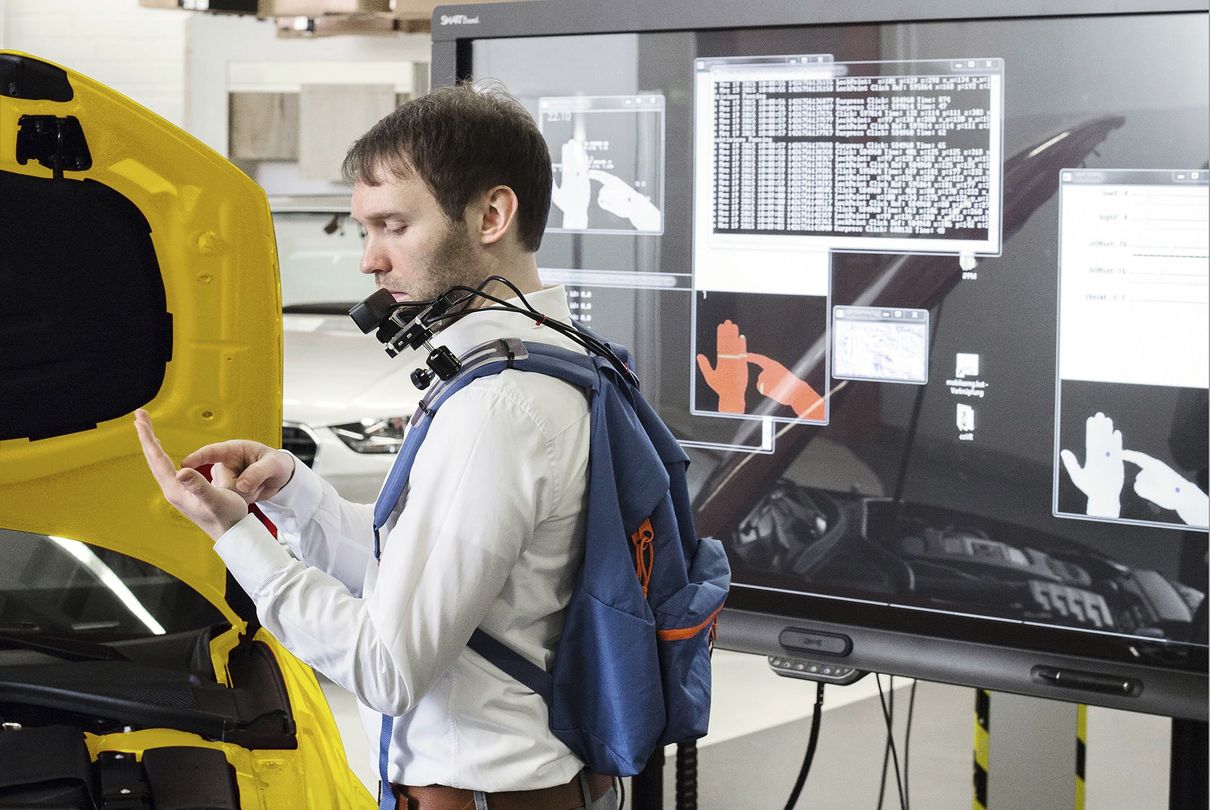
Please describe P Lab for us. How long has the Audi Production Lab been operational, how many employees are there, where is it based and what do the facility and its everyday activities look like?
Set up in 2012 with a handful of colleagues, P Lab is located at the Ingolstadt plant. Today, there are over 30 permanent employees. Since colleagues from across all production areas are involved in various projects at the P Lab at any one time, temporary lab users increase the number of permanent employees by a factor of five or six. So there’s a lot going on at P Lab. People engage spontaneously in networking, exchange ideas, share results and ask others’ advice. We live and breathe start-up culture but we don’t feel the need to try and prove that through optics or fancy furnishings. So, unlike at some Silicon Valley digital companies, you won’t find a ball pit, foosball table or hammocks. We did have a couch at the beginning, but that just didn’t fit here, either. Our kind of creativity calls for a technical environment with the feel of a real production plant. That’s why the P Lab incorporates not only a body construction cell, just like the one for the new Audi A3, but also the means to realistically simulate vehicle construction according to four assembly line flow cycles.
“
Colorful charts are of no use to us. What we need is steel, sheet metal and the ability to actually build a car.”
How else does P Lab differ from other Four Rings think tanks, such as Audi.Denkwerkstatt?
We focus specifically on all things production optimization. Sometimes, we’ll stumble on an interesting product idea—in other words, relating to the vehicle itself—but we pass those on and don’t pursue them further. What’s more, we physically test everything. We have to literally get to grips with things. Colorful charts illustrating theories are of no use to us in production. What we need is steel, sheet metal and the ability to actually build a car. Initially, no one is an expert on a new process. It’s only through assembly, trial and error that we get anywhere.
Please give us a few examples of projects that P Lab has conducted.
We have already matured some solutions to the point that we were able to hand them over to the relevant specialist departments. Two such examples include 3D metal printing and new findings on human-robot cooperation. Plus, we offer our expertise to all departments wishing to make use of smartglasses and looking for support with assisted, augmented and virtual reality. We have also achieved tremendous success using big data.
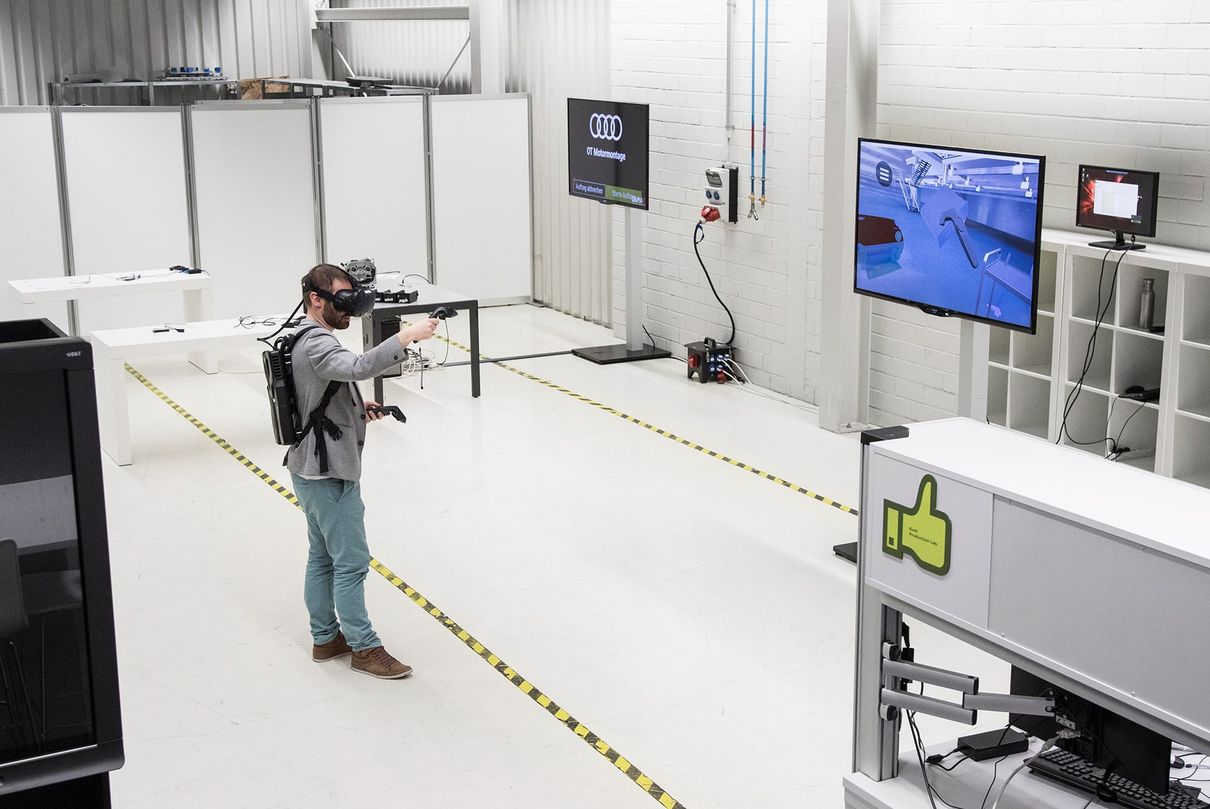
How can large volumes of data improve manufacturing processes?
There is a lot of useful information in the data generated during vehicle production processes. All you need to do is develop appropriate programs and algorithms to evaluate the data. Quality control in highly automated operations, such as work involving bolted joints and spot welds, is a case in point. The industry standard for resistance spot welding quality control is to use random testing. We have succeeded in optimizing the plant so that each of the 5,000-plus weld spots on every vehicle is monitored live and checked digitally for deviations from the standard. As we now need far fewer statistical samples, we can focus selectively on flagged cases. After all, it is precisely these defective weld spots that interest us. That means our overall approach is far more efficient and precise because we check 100 percent of the welds. Interestingly, the view was that notably resistance spot welding was already so well researched that it offered no further optimization potential. But that’s exactly the point of P Lab—if there’s anything to be gained from it, we turn over all of the same stones again.
What other projects are currently in progress at P Lab?
Modular assembly is one of the big topics we’re working on right now. With its driverless transport systems, small, independent production islands and highly flexible workflows, this cutting-edge production method will replace linear solutions such as assembly lines in the future.
5G technology is another of our lines of research. Our aim here is to clarify fundamental questions: What is the technology capable of? How can its high data transmission rates benefit production? How can it be used to create a local campus network? On top of that, we have the opportunity to shape the global network standards. Audi is part of the 5G Alliance for Connected Industries and Automation (5G-ACIA). This means that the P Lab serves as the development’s ground zero, putting the data network through its paces in order to determine what requirements 5G technology must meet for industrial production.
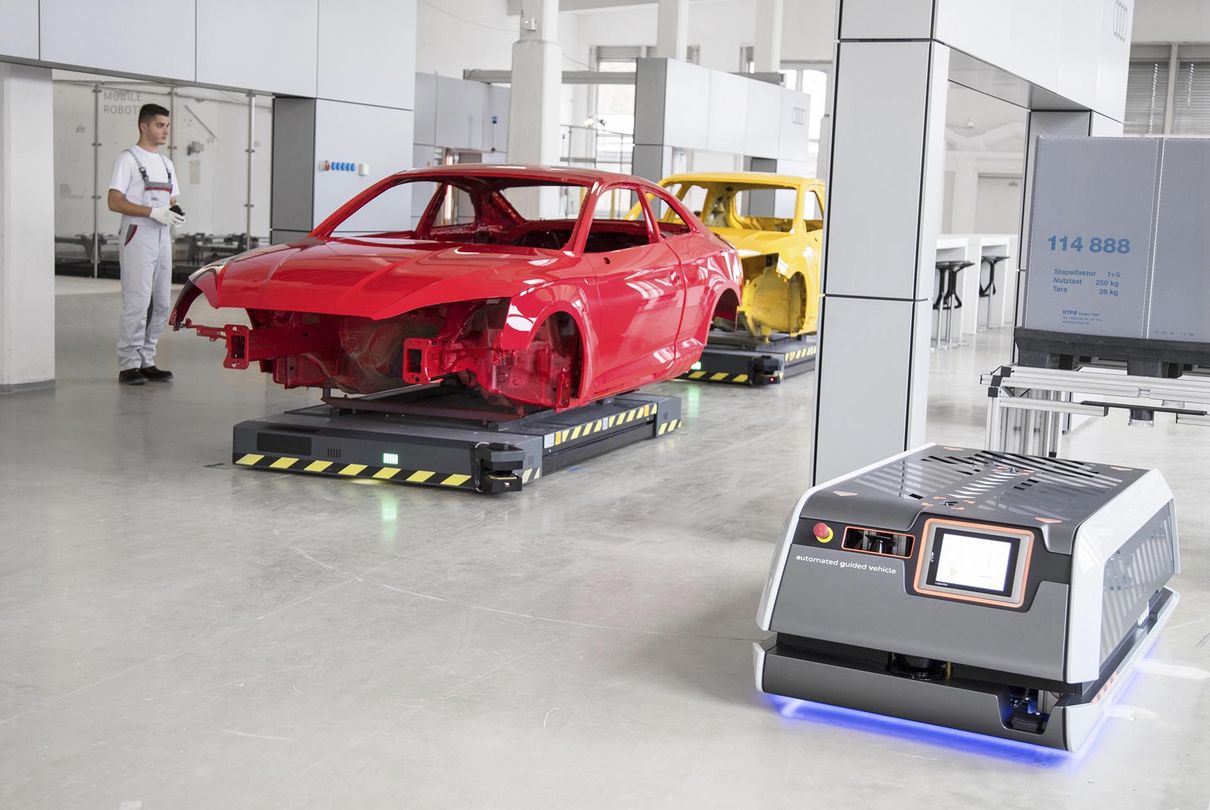
As far as Audi production is concerned, what do you see as the greatest challenges going forward?
Forecasting today what we will need tomorrow is proving increasingly difficult. Studies refer to it as a volatile or extremely haphazard and unpredictable development. But it’s safe to say that digitalization will continue to drive tremendous change. In production, too, we expect advances in sensor systems as well as control and semiconductor technology to smooth the way for groundbreaking innovations that are impossible to foresee today. This opens up great opportunities, but also poses challenges. We don’t have a crystal ball, so we have to become more flexible in order to adapt faster to new developments. Ultimately, this means always remaining open and curious about the world as well as pursuing lifelong learning. Thanks to our course concepts, educational offerings and the Audi Academy, we are well positioned to achieve this.
What inspires you personally and helps keep the creative and innovative juices flowing so you can think outside the box?
In my personal life, too, I’m drawn to all things technology. I like to try out new things so I understand them better. At home, for instance, I have installed a photovoltaic system and automated all the shutters. Inspiration needn’t be limited to reality, which is where science fiction books and movies come in for me. What fascinates me is how some of the technologies depicted are no longer dreams of the future but about to become reality. But above all, I recharge my creative batteries by going home to my family in the evening. Normal life keeps me grounded.
